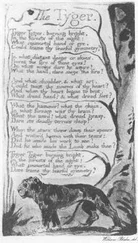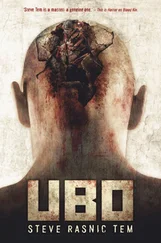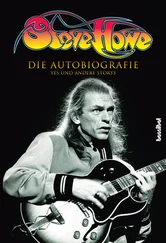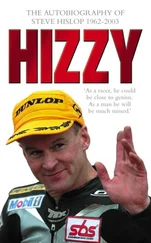Then pregnancy came like a toe stub in the middle of the night and their child, this child, was born.
But something was terribly wrong with this particular child, her child, his child, this strange little twisted and discolored bit of flesh. Nothing they could have imagined. In fact, if the couple had taken in a movie and this apparition had traversed the screen, they would have gotten up and left.
I must confess that no records have survived describing the specific nature of the child’s deformity, if indeed there ever were such records. All we have are descriptions of other people’s reactions to the child—most importantly, the parents’. In any case, early on the child developed his own solution for his singular facade.
[Lights up on the PARENTS, moving slowly side to side, rocking.]
PARENTS(almost a song): What to do when to do it, how does it happen when you hope and dream, the surprise that comes unasked for, the joke of it, the terrible joke of it, these questions of duty, of life so unexpected, these questions they ask of you, all of them asking so much, so much, and much too soon.
[THE MASK CHILD totters in, draped to the neck. We can see nothing about his body, but he appears to move more like an insect or arachnid than any human child (or is this simply a child’s normal awkwardness magnified?). He wears a small Baby Face mask, perfectly formed, doll-like, but empty of character.]
THE MASK CHILD: Mother, Father, see? Can you see, can you not see? I’m a real boy now. A real boy. [The PARENTS ignore him, so intent are they on their rocking, their swaying. They drift back and forth across the stage—he follows them closely, essentially chasing them.]
PARENTS(chanted/sung softly and monotonously underneath THE MASK CHILD’S speech): What to say, what to do, our duty, just a boy, he cannot understand, cannot know, how people are, how people really are, what to say, what they’ll do, what to do, what to say, just a boy, how could he, how could he know, our duty, our life, our life, what must be, what must be done.
THE MASK CHILD: A boy, a real boy, like the other boys, like so many others. Now we can toss the ball, now you can teach me about bikes, like so many others, Mother, Father, we can go to movies together, we can go to plays, we can, we can, I am so alike, I can be so liked.
[He finally crashes into them. They reel—he stares up at them.]
PARENTS: You cannot know, you cannot understand, how there is no play in this, how there is so much duty, so much to be done, and no one to tell you, no one who understands, what must be done.
THE MASK CHILD: To play, to sing, to dance, to walk outside in sun and snow, hand in hand like so many others, a boy like so many others, in the morning, with the sun on my face, with the sun.
PARENTS(more loudly): We never knew there could be, what’s the duty? We did not understand, the shapes, the package, how a life might arrive, so many, so many, how could it be, in the night, when no one is listening, where no one can hear, in the night, dear child, in the night.
THE MASK CHILD(scrambling back, shouting): But in the sun, so many others, tossing the ball, Father! A real boy, Mother! So real, in the sun, on my face, my face, Mother! In the sun, in the sun.
[Fade out, fade in on the NARRATOR]
NARRATOR: I see it every day. We all make the mistake. We forget what they are. We forget their humanity. The children are so cute, we say. They are so adorable. Like a doll, we say. Just like a monkey. But of course the children are not dolls or monkeys. And they sometimes understand far more than we could ever imagine.
The problem, I would submit, is that our imaginations are so very poor, there are so many things we cannot imagine: how they think, what they feel, the many shapes a life can take, the varied forms still with the power to think, the passion to feel, the imagination to dream such sights and sounds you would be astounded, you would weep from the sheer surprise of it all.
Very little is documented of his adolescent years. But even with our poor imaginations we know. We can see.
[Fade out on the NARRATOR, fade in on a group of adolescent BOYS—all similarly constructed except for their hair colors. As they move about the stage two points beneath their drapery beat rhythmically against the cloth. The motion is somewhat reminiscent of grasshoppers. It becomes clear that these represent knees as their legs are constantly pumping—these boys are all knees and elbows, and their movements about the stage make this kind of awkward, synchronized adolescent dance. In fact these puppets might be constructed ganged two and three together to facilitate control and emphasize this odd, awkward sort of chorus line effect. During their game THE MASK CHILD appears on stage, older now, but still very much out of place. He wears a huge mask, brightly painted, African in style, suggesting some sort of warrior.]
BOYS(repeating chorus): This is the game we love, every night and every day, we play, this is the life, all the boys say, this is the game, this is the life! This is the time, we say, this is our time, we play, all the day is ours, we rave, this is the game, this is the life!
THE MASK CHILD: This is the life, oh yes, this really is the life. And I can play. I have the legs, and I have the head for it. See? My big and beautiful face with all its paint and terror? This is the play, this is the life. I can say it, I can say it so well!
BOYS(still moving constantly, surrounding him aggressively): This is our life, we say, this is our game, these are our heads and these are our knees, out of our way, we say, it’s not your time, we say, out of our way, out of our way!
[The BOYS dance around THE MASK CHILD, who twirls and leaps at their center. THE MASK CHILD’s movements become frantic, and he crashes his great warrior’s mask into the BOYS as they close in on him.]
THE MASK CHILD: Let me out, I say! I have a life, I pray! Let me out let me out, I have a life!
[Suddenly, his back to us, THE MASK CHILD’s mask comes off and falls to the stage. We cannot see his face. All action stops. The general lighting dims, the tall shadow of THE MASK CHILD is thrown across the backdrop. The BOYS shrink slowly away into the shadows. After a pause a single BOY comes back on stage, gives THE MASK CHILD back his mask and leaves.]
THE MASK CHILD(softly): Let me out, let me out, I have a life.
[Fade out on THE MASK CHILD. Fade in on the NARRATOR.]
NARRATOR: It is an unfortunate fact of life that our poor faces can only begin to reflect the light that fills and gives color to the heart. For what is a face but a few scattered knobs of flesh, the odd opening and some strategically placed teeth? A random toss-up of features out of that swirling genetic cesspool that your parents and their parents before them created out of the sweat and leak of their ancient passions.
Is this any better than a mask? In fact I think it is far less. At least when we create a mask for ourselves there is some thought put into it, even if those thoughts were derived second-hand from the originality of others.
But take it from an old judge, ladies and gentlemen—be careful what mask you decide to put on, because that is your life.
[Lights up on THE MASK CHILD, sitting alone in the middle of the stage. At first, his head appears covered by a huge (several times his body size), stony-faced mask with rough, forbidding features. In fact, his head is covered by a series of masks, one inside the other like nested dolls. These masks come off one at a time throughout the scene that follows, ending with the final mask: plain and white with large eyeholes. The masks should be of a variety of designs and materials, showing a wide range of emotions and effects. THE MASK CHILD also grows much taller during this scene, so by the time the last mask is removed it appears as if he has grown into young manhood right before our eyes. The correct musical accompaniment would be important here (a lot of discordant violins, for example).]
Читать дальше












